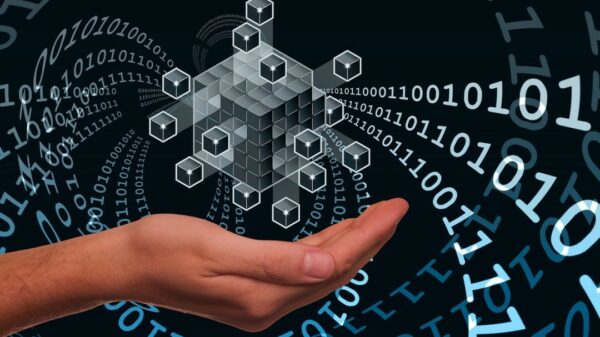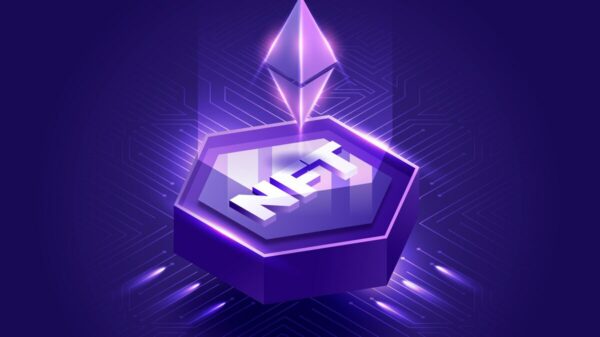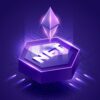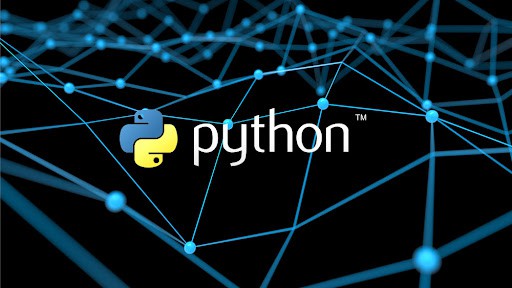As any members of the larger tech community will no doubt already know, there’s a definite trend when it comes to the adoption and perception of exciting new technologies and tech products.
The first stage is a king of infancy for the tech in question. Only the initial developers and supporters are even aware of the new technology and awareness only expands via word of mouth.
Next, tech insiders become aware of it and perhaps even start to invest time and resources into its development, or simply to explore possible applications.
The final stage is widespread adoption, especially among mainstream consumers.
This trajectory applies to many of the technologies and devices that are now part of daily life, including personal computers and mobile phones.
Blockchain, and the closely related Internet of Things (IoT), seem to currently be in the second stage. Blockchain has reached the point where many people have at least heard the term, but relatively few people (most of them tech professionals) actually understand the underlying concepts and the myriad applications.
As a result, blockchain has not yet achieved widespread adoption, and it has not yet become part of daily life, at least not here in the United States.
Regardless, this is a very interesting transitional period for blockchain and IoT, both on the technical side as well as in terms of public perception of this technology, or, more accurately, this group of technologies.
Blockchain expert Eliott Teissonniere
Eliott Teissonniere was a tech wunderkind by age 17, when he became CTO of BitNation. This was in fact the same year that the startup won the NetExplo Grand Prix from UNESCO.
Two years later, Teissonniere started working with Nodle, a Blockchain/IoT startup. With Nodle, Teissonniere created multiple patents and greatly expanded the network.
Teissonniere has served as a mentor at the Berkeley Blockchain Accelerator and helped organize the world’s first (E-) Governance Focused Conference as part of the Governance Research Institute, which he also co-founded.
It’s appropriate to call Teissonniere a blockchain expert, and given the timing of his career, he has witnessed many changes within blockchain and blockchain applications.
To put it another way, Teissonniere is highly qualified to discuss the current state of blockchain tech, how it’s perceived and likely will be received in the near future and potential applications.
Teissonniere recently spoke with TechSling about all this and more.
Perception of blockchain and its potential
Beginning with how blockchain is perceived by different groups and industries, there’s quite a bit of variance.
As you would expect, technically-minded individuals and professionals have long seen blockchain as an exciting concept that could be used in so many different ways across many different industries.
When Teissonniere was starting his career, blockchain was still very much in that infancy stage mentioned earlier. He knew that it had a great deal of potential, even the potential to transform entire industries.
However, for other groups, the outlook was not quite as positive. In particular, the relationship between blockchain and legislators and regulatory bodies was less-than-friendly, and in certain cases, this is still true today. Teissonniere elaborates:
“For a long time, [blockchain] existed in a gray area where regulations were, and still are to some extent, very unclear. It seems like the recent attraction and popularity of crypto-currencies, one of many applications for blockchain-based technology has been very helpful in democratizing blockchain as a thing that is not just for nerds and which has real, tangible, potential.”
Right away this touches on the changing perception of blockchain. As Teissonniere mentioned, the general public’s view of blockchain has been largely positive, mostly due to the rise in the popularity of cryptocurrencies.
As for how legislators view blockchain and its applications, it’s definitely more of a mixed bag. Certain governments have actually adopted blockchain (more on that later, but there’s still a great deal of hesitance and even a lack of understanding from other governments and government leaders.
Blockchain’s ease of use based on skillset
Staying on that topic of perception, and, more importantly, the understanding of blockchain, there no doubt remains a significant gap between tech professionals and the general public.
While many Americans are at least familiar with the term ‘blockchain,’ not many Americans know what it really means and how it works in reference to any real-world application.
Teissonniere comments on this gap in understanding, which he sees as being related to each person’s skill set and professional profile.
“It took me a few weeks to get very familiar with blockchain-based applications programming, and a few more months to get up to speed with the internals of blockchains themselves. In general, the barrier to entry for technical people is quite low, but it may be a bit tougher for less technical profiles.”
While having a basic understanding of a specific technology is certainly helpful for fostering adoption, it’s also not a strict requirement.
For example, while millions of people use smartphones every day, very few actually understand the internal components and the hidden software that makes it all work.
It’s much more about the ability of the average individual to understand how blockchain can benefit them on a practical level.
This will likely take time. Blockchain needs to first be applied in more places, in more industries. Then, when people understand that blockchain is doing a lot of the work under the hood, opinions on tech will only become more favorable.
Blockchain/IoT breakthroughs
Based on the current pace, it seems inevitable that blockchain will continue to be used in an increasing number of applications, especially in relation to IoT devices.
Teissonniere explains that one of the recent major breakthroughs in both blockchain and IoT has been the sheer power and efficiency of IoT devices, which opens up many more possibilities.
“People are starting to realize that the IoT devices we build and deploy at scale can be more intelligent and handle more tasks. Chips embedded in IoT devices are becoming more power-efficient and powerful. Advances like these allow us to perform more complicated tasks on IoT devices and even have them perform cryptographic operations, such as creating transactions on a blockchain or at least authenticating the data they create.”
This evolution of IoT tech only strengthens the connection between IoT and blockchain.
One recent example of this evolution of tech is Apple’s M1 chip, an ARM chip that boasts incredibly impressive processing power while only consuming a small amount of energy when compared to traditional processors using x86 architecture.
As performance capabilities increase, blockchain can be used in more places and via more devices.
Government applications
One of the most enticing applications of blockchain has been its ability to make decision-making within large organizations much faster and more efficient.
With this in mind, it doesn’t take long at all to imagine how blockchain could be used to streamline operations within a government.
Government entities of any size have long had a reputation for being inefficient, clunky, and, when it comes to how individuals interact with government agencies, extremely contrived and confusing.
Whether federal government agencies here in the United States would consider using blockchain tech any time soon is doubtful, at best, but elsewhere, inroads are being made, as Teissonniere explains.
“The government of Estonia is using a heavily blockchain-inspired system, named X-Road, to link its administrations and massively improve its efficiency as a nation-state and reduce the amount of paperwork and administrative hassle. Beyond this, the same technology used for decentralized organizations may very well be used by governments or companies to make better decisions and handle transparent, unstoppable, and verifiable votes, such as for national elections.”
At least in theory, blockchain systems could help to outphase any number of outdated technologies that large governments currently rely on.
This could mean more efficient and transparent operation, but it could also mean that the average person’s interactions with government entities could be smoother and far less frustrating.
It’s a win-win scenario, and yet it’s one that, for the moment, is still far off in the distance.
A major barrier to widespread adoption
In closing, Teissonniere discussed a number of major barriers to the widespread adoption of blockchain, but there was one barrier in particular that he wanted to address:
“Because blockchain technology is still misunderstood by national regulators, not every regulation is clear and understandable for potential innovators. In addition, some legislators are proposing bills that could negatively impact the development of this tech.”
In a sense, it’s understandable that legislators would want to keep tabs on the blockchain, especially given that many legislators likely don’t fully understand what blockchain actually is.
However, as with any other form of emerging tech, extensive regulation could dampen interest in the development of this technology or even inhibit potentially useful and helpful applications that are already well underway.
In the end, it’s a balancing act, reining in potential problems while still providing enough freedom for rapid development and evolution. And while that’s a tall order for entrepreneurs, it’s only a matter of time before futuristic technologies of today are as ubiquitous as refrigerators or lightbulbs.
In the meantime, sharing knowledge and increasing understanding of blockchain and its applications, both among the general public and among legislators, will no doubt result in a sensible approach to regulation and utilization.
I'm a long time fan of tech innovation, especially its capacity to cross over into the realms of art and social justice. The paradigms are constantly changing, and we need to change with them.

























































































































































































